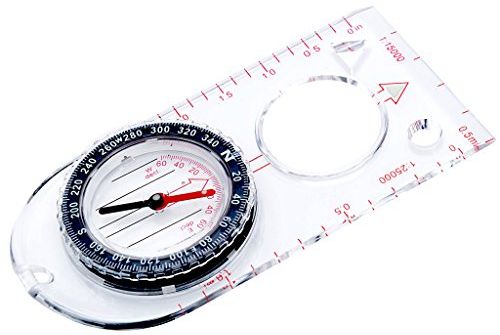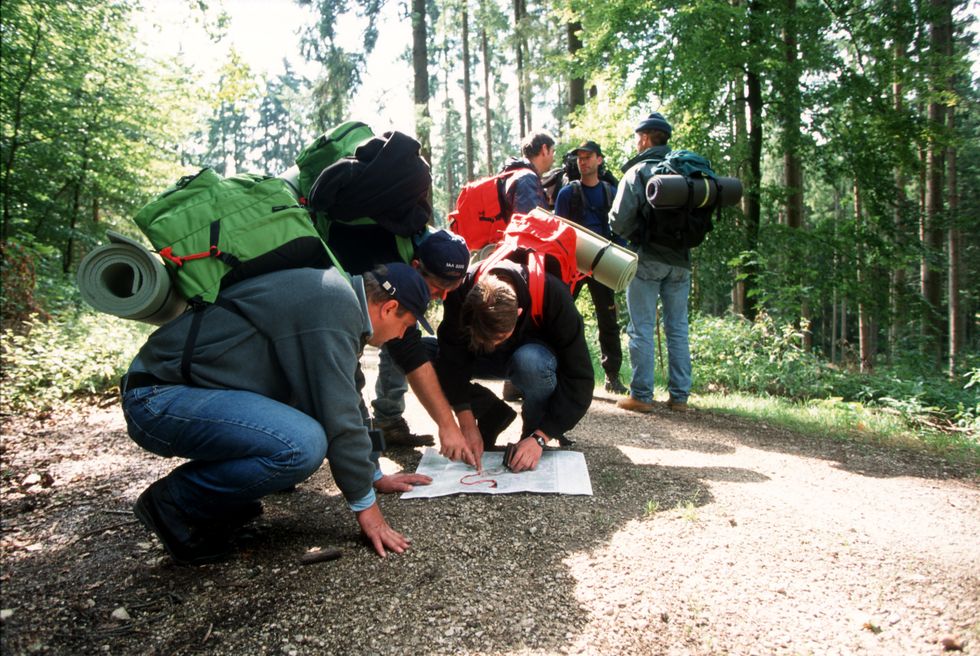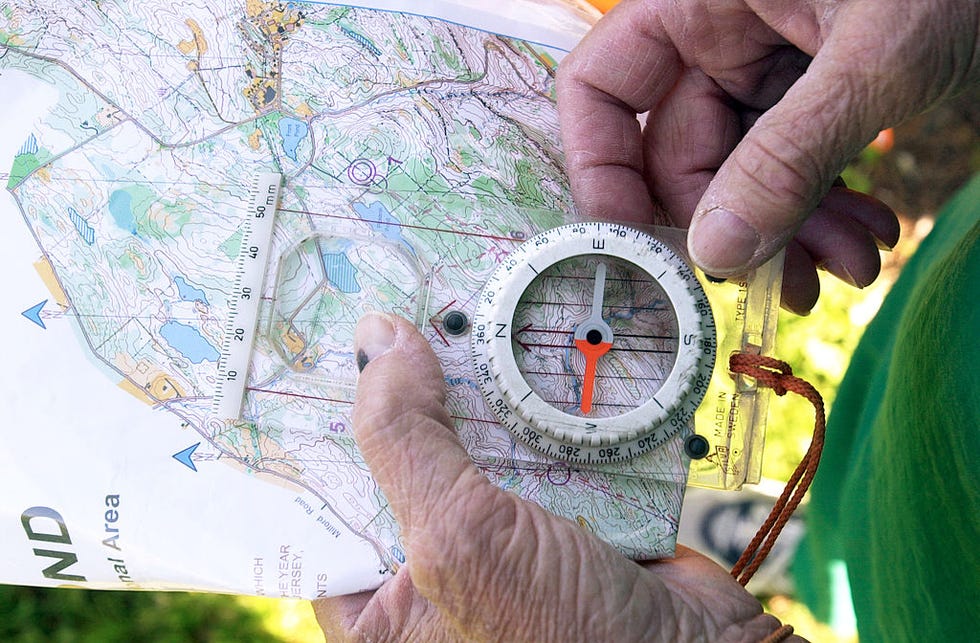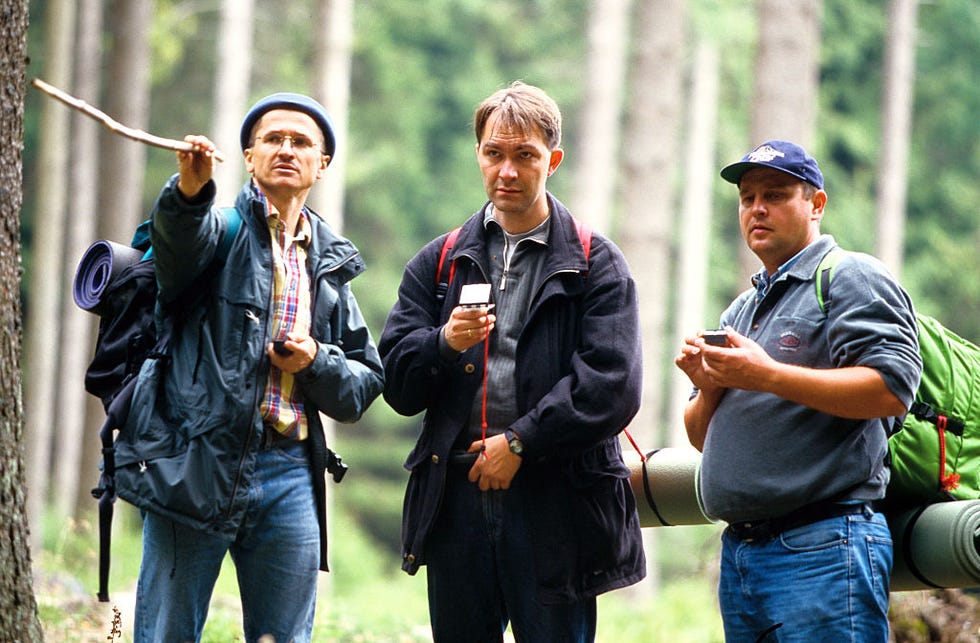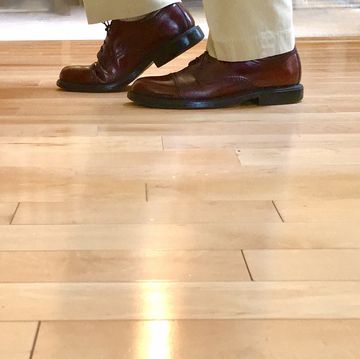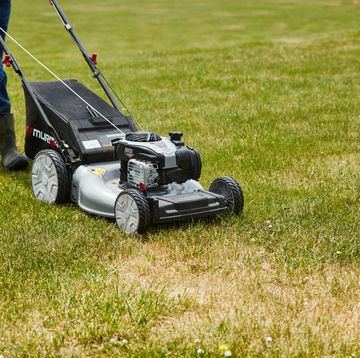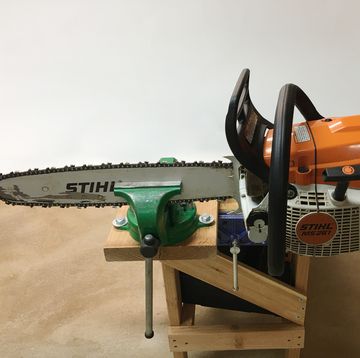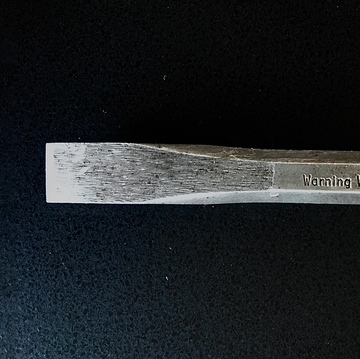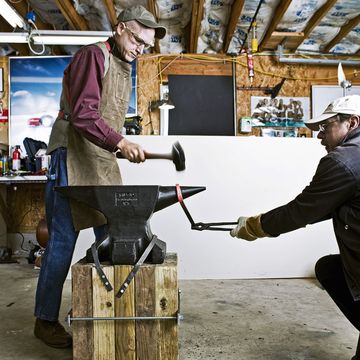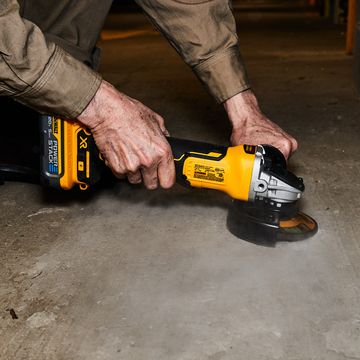Using a compass is an essential skill. It’s like having a mental roll of duct tape: You don’t know when you’re going to use it, and it might kick around unused for a long time, but when you’re in a pinch, you’ll be glad you have it.
With a compass, you can navigate a map, shoot bearings to find your location, and even participate in fun activities like geocaching, an orienteering-based scavenger hunt.
Navigating with a compass starts with, well, a compass. While the old army style with a flip-up cover is cool, a rectangular plastic orienteering compass with a spinning dial is your best bet.
We love this affordable option:
What makes up a compass?
Baseplate: The plastic rectangle that makes up the base of your compass. The straight edges on the sides help to shoot bearings.
Direction of travel arrow: The arrow fixed on the middle of the baseplate.
Magnetic needle: This arrow, often red, is what points you north.
Compass housing (Bezel): The spinning marked with N,E,S,W, the cardinal directions, and 360 degrees, all of which help you head in the right direction.
Orienting arrow: The arrow or box, usually about the width of the magnetic needle, drawn on the interior of the compass housing.
Index line: The line that comes down from the direction of travel arrow and points to the bezel.
How does a compass work?
The magnetic needle on a compass points to magnetic north, rather than to the true north pole. While the earth does act like a giant magnet with a north and south pole, the churning molten core makes magnetic north wander away from the pole.
In order to account for the difference between magnetic north and true north, every map will be marked with declination—this is the difference—in the specific area that that map covers, between true and magnetic north. This number varies depending on where you are in the world. If magnetic north lies directly between you and true north, then you’ll have a declination of zero. But in most areas, you’ll have to add or subtract to what your compass reads as north.
Because magnetic north is wandering, it's important to have a modern map. Because even if the declination only changed by one degree, that can make an enormous difference over the course of a few miles.
OK, so where do I find this declination figure?
Check the legend of your map, usually in one of the corners, which should also have the date the map was created so you can be sure you have an up to date map.
What if my map is pretty old?
Worry not, head to the National Oceanic and Atmospheric Administration (NOAA) website to calculate your most up to date declination. If you own the map, go ahead and write the new figure down next to the old one, just make sure you date it.
How do I find true north?
1. Hold your compass flat near your belly button, let the magnetic needle settle. The red end points to magnetic north.
2. Spin the bezel of your compass until N (north) is in the center of the baseplate, with the index line pointing directly at N.
3. Rotate in place until the red arrow of your compass lies within the orienting arrow and points at N. You are now facing magnetic north.
4. Read your declination. If it reads X Degrees WEST, twist your bezel clockwise to subtract that number. If it reads X Degrees EAST, spin your dial counterclockwise to add that number on your bezel. If you have trouble remembering which way it goes, consider learning one, or a few, of these rhymes.
5. Spin in place until the magnetic needle is once again inside of the orienting arrow. Now the direction of travel arrow, and you, are pointing true north.
How do I align my map with true north?
1. Lay your mat on a flat surface, beware of metal bolts on picnic tables which can affect the magnet.
2. With your compass pointing to true north, line the straight edge of the compass up with the north south lines of your map. Your map is now oriented toward true north.
3. Put rocks on the corners, or otherwise secure your map, so that it doesn't move while you navigate.
How do I use my map with my compass?
1. With your map aligned to true north, look around you for two known landmarks. Mountains work well, lakes work well, even water towers or road intersections can work great.
2. Find these landmarks on your map.
3. Take your first landmark. Pick up your compass, adjusted for true north, and point the direction of travel arrow at the landmark.
4. Spin the bezel of your compass until the needle is in the orienting arrow (put red Fred in the shed, as we used to say in Boy Scouts). The number at the index line is your bearing.
5. Put the compass on your map with one corner touching the landmark. With the compass corner touching the landmark, spin the compass until the needle is once again in the orienting arrow. Draw a line with a pencil on your map along the straightedge of your compass, intersecting your landmark.
6. Repeat steps 1-5, with your second landmark. Where the lines intersect, is your location.
7. If you’re on a trail, pay attention to how the land or trail around you corresponds to the map as you travel so you don’t have to continue shooting bearings. If you do get turned around, shoot bearings once again.
How do I pick the right direction?
1. Align your map to true north.
2. With a straight edge, draw a line between where you are and where you want to be.
3. Put your compass straight edge, adjusted for declination, on that line, turn the bezel until the needle is in the orienting arrow.
4. Pick up your compass, and holding it flat, put it against your bellybutton so the direction of travel arrow is pointing away from you. Turn yourself in place until the needle is in the orienting arrow. The direction of travel arrow now points where you want to go.
5. Pick a landmark in the distance that your direction of travel arrow points to, walk to it. This makes it easy to stay true to your course.
Happy adventuring.
James Lynch is Popular Mechanic’s Field Editor looking for stories across the U.S. about those building a better America. He’s passionate about the Erie Canal and the Apollo Space Program.


